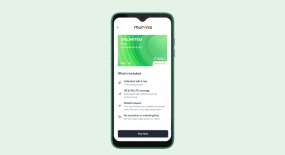As those once-popular ‘all-you-can-eat’ (AYCE) data plans slowly disappear from view, we need to look forward to determine what will replace them. Even Sprint in the US, a champion of AYCE plans, reportedly sent disclaimers to its top 5 percent of volume users limiting their over-usage. And Verizon recently announced it will be throttling heavy LTE users who are still grandfathered into an AYCE plan.
AYCE was designed for a time when the fear of declining voice revenues had to be quickly bolstered by data revenues but people simply did not have the devices that supported heavy data use, nor were the networks geared for it.
By offering AYCE plans to customers as a monthly subscription, the operators managed to garner recurring revenue from a new source with little fear of over-use because of slow and often inconsistent or disrupted data delivery.
The smartphone phenomena and the introduction of 3G and 4G technologies changed all that. In hindsight, it is easy to say that AYCE was a doomed business model, but it did succeed in attracting lots of customers. The challenge now is keeping them. So, what will the new, and hopefully successful, business models look like?
A quick look around the digital services market gives us some good indications of what will work. For example, the popular game Candy Crush generates $1.4 billion of revenue at around 30 percent margin 99 cents at a time. That’s a low cost, high margin, high volume model that is clearly delivering the goods.
Of course, there are thousands of similar products that don’t make it, but it’s the business concept underlying the success that needs to be copied and exploited.
Telcos actually had the same model for decades, they just haven’t realized how to move it forward. After all, phone calls were low cost and high volume, supported by sophisticated billing plans that charged by duration, distance, time of day and any number of other variables.
Instead of expanding on this granular approach, we now find some telcos offering fixed price subscription models covering all subscriber calls, local and national, along with Internet access, TV, and mobile data usage. These amount to AYCE plans but at a more complex level where loss leader products are complemented by higher profit ones in order to achieve some level of profitability.
Can you imagine the same model being applied by supermarkets? You would pay a fixed monthly fee and could take any amount of any type of groceries you wanted! Given the vast difference in cost and value between various types of groceries, it’s not hard to see that the “liquor and meat” consumer will cost the supermarket a fortune while the “tea and rice” consumer will be vastly overcharged and likely churn. These same differences exist in mobile data – think of the value per Megabyte of an important conference call versus your kids watching an HD movie. In spite of this, some telcos are stuck in a “bytes are bytes” way of thinking.
The forces of market efficiency are unstoppable. Over time, the market will demand a set of offerings that allows each customer to receive the value they want at any given moment and pay for exactly that value – no more, no less. That’s the way mature markets have worked for centuries.
The retail market is a perfect example of this. Customers make value decisions all the time. Shall I take the cheap home brand over the more expensive known brand? Shall I buy in bulk to get a better price, or will it spoil before I use it all? It’s this plethora of choices that customers understand, want and are willing to pay for.
Here lies the key to the new business models – a wide variety of quality and quantity levels and the ability to price them accordingly (and even dynamically) in order to take advantage of high value services, idle network resources, the impulse purchase, and so on. It’s certainly easier to offer simple subscription models, but far more attractive and profitable to offer customers a variety of options so they can spend as much as they want. After all, that’s how they buy everything else!
This article was originally published in Matrixx's Blog.




















